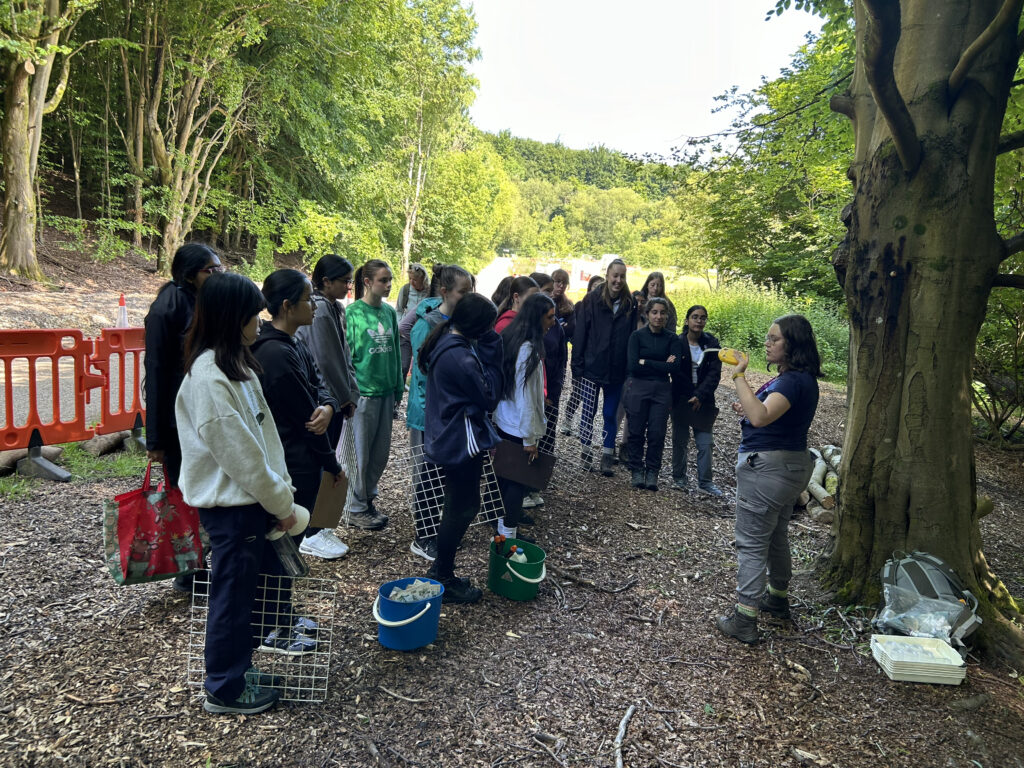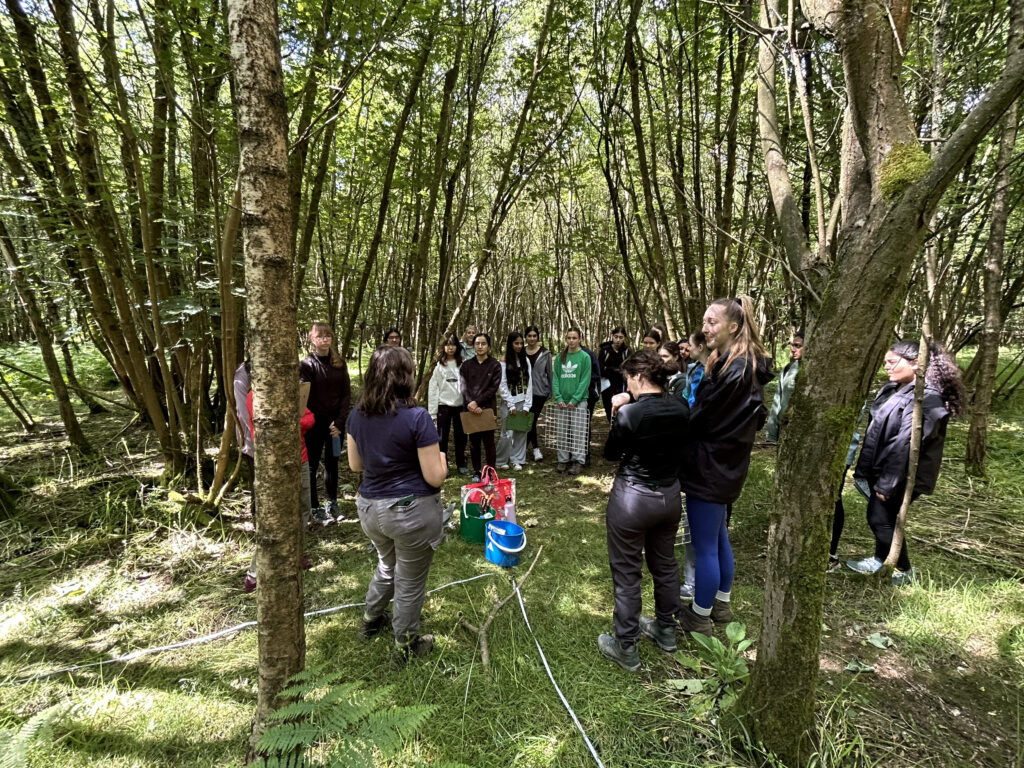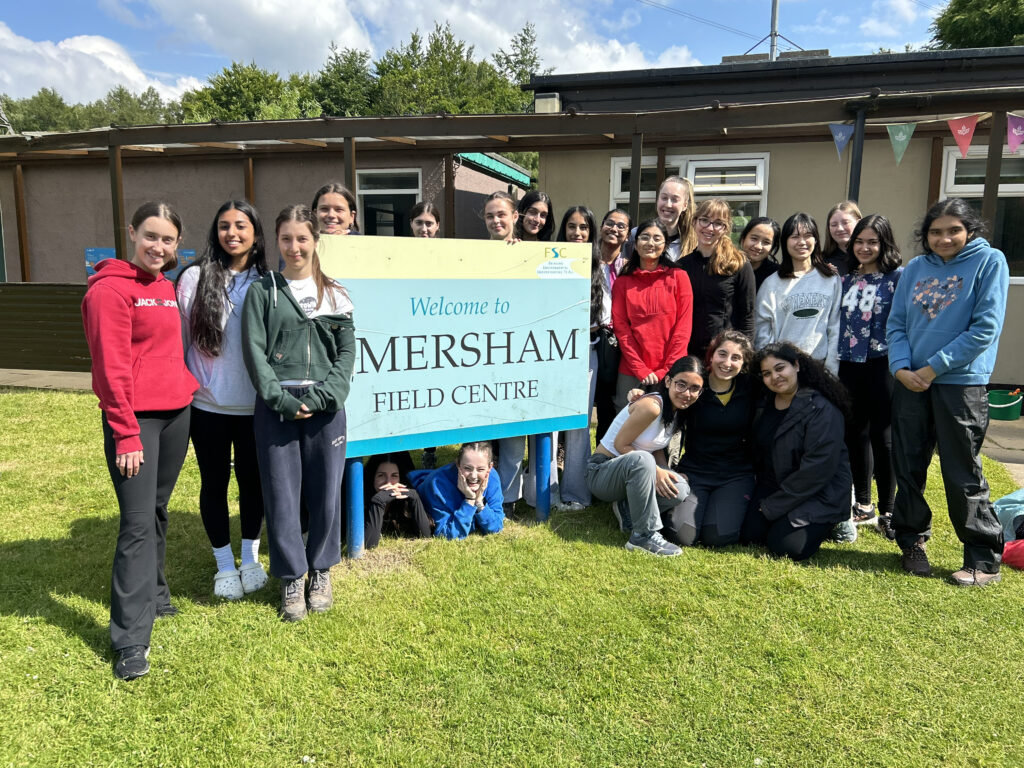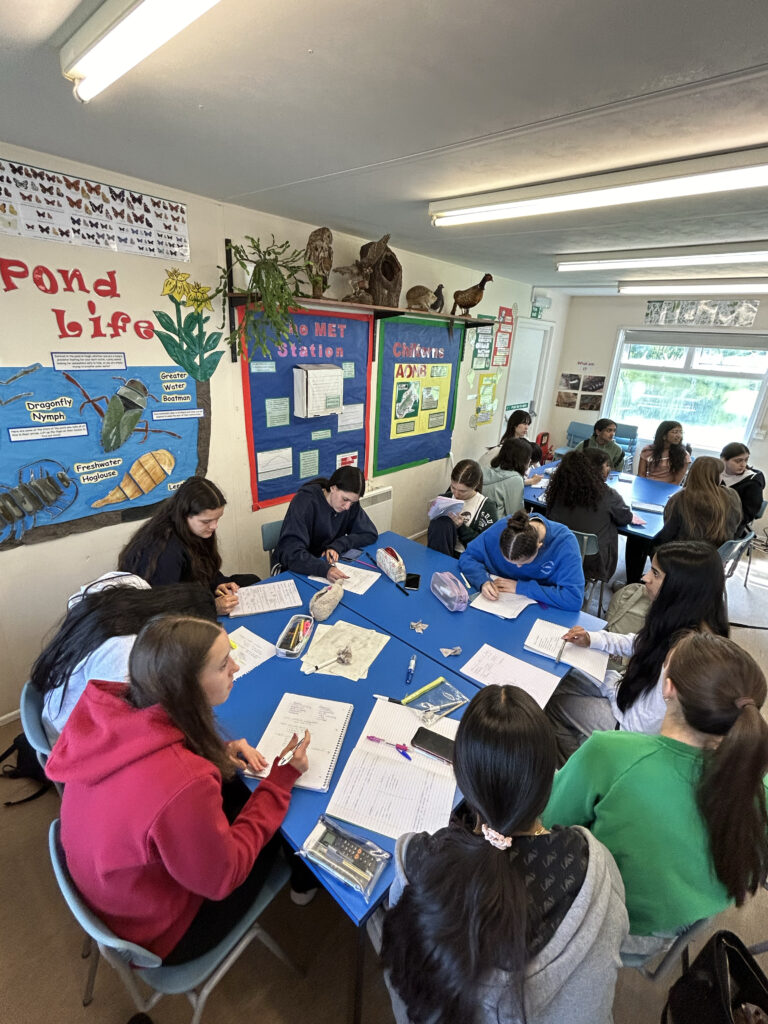Last Tuesday, we went on an A Level Biology trip to Amersham Field centre. Our objectives for the day were to investigate the factors affecting diversity of the woodlands and grasslands. We learnt new skills including how to measure abiotic factors (light intensity, canopy cover, soil pH and temperature) as well as biotic factors (trampling).
The first practical activity we did consisted of carrying out a technique called ‘Capture-Mark-Recapture’ to estimate the size of a population where it is impractical to count the whole population. In our case, we counted woodlice! We had 10 minutes to capture woodlice in a specific area and then they were marked with a dot of non-toxic of Tippex. We then released them back into their environment and returned to recapture them at the end of the day. When recapturing, we were able to identify the woodlice which we had already caught (none in our case) and then estimate the population using an equation.
Our second investigation consisted of using random sampling and quadrats to carry out our aim of investigating factors affecting diversity of ground flora in coppiced and thinned woodland ecosystems. We measured various abiotic and biotic factors mentioned above and counted the number of ground flora in our quadrats. We had a species identity key, so we learnt about many new plants as well as being able to taste some sour wood sorrels! After carrying this out in both the thinned and coppiced woodland in our groups, we were able to use our data to calculate the Simpson’s Diversity Index of both woodlands to compare their biodiversity and find out the effects of the factors measured on the two methods of woodland management.
Our final investigation addressed how factors such as trampling across grasslands can affect the abundance of the ribwort plantain. As a team, we were given the task to construct a piece of equipment we needed for this experiment called a ‘point frame’ quadrat using thick and thin poles. This did test our team working skills, but we eventually came to an agreement that we had made the frame correctly (after checking to see if the other teams had made the same thing!). Using systematic sampling we counted the number of ribwort plantain in the grid every 0.25m and used this to calculate the abundance and found out that ribwort plantain don’t like being trampled!.
We especially enjoyed the team working skills that we developed as well as estimating a woodlice population of around 300 when our group had only caught 6!
Overall, this was a very informative and unique trip that will definitely help us ace our Biology A Level!
By Laasya and Ani , Lower VI




